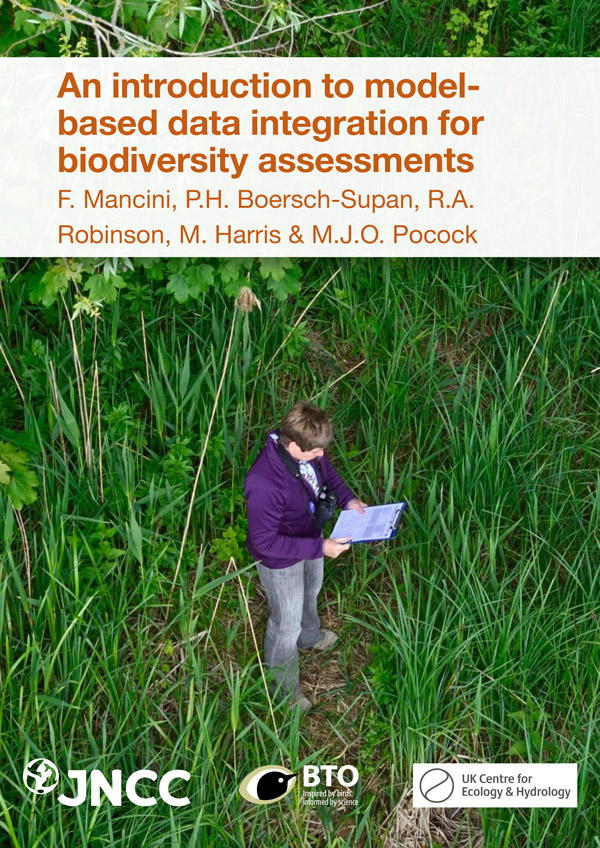An introduction to model-based data integration for biodiversity assessments

Author(s): Mancini, F., Boersch-Supan, P.H., Robinson, R.A., Harris, M. & Pocock, M.J.O.
Published: May 2022 Pages: 30pp
ISBN: 978-1-86107-639-7
View publicationAlmost everywhere nature is under pressure. Thus, the need to monitor the state of nature and identify the many pressures affecting biodiversity has never been greater. However, the current range of biodiversity monitoring activities is varied and complex, ranging from collecting environmental DNA (eDNA) samples to structured monitoring schemes and opportunistic recording. Model-based data integration is a statistical tool to combine these different sources of data to produce robust biodiversity assessments based on more of the available evidence.
Abstract
Take home messages
- Model-based data integration is a statistical framework to combine the analysis of data from multiple sources to create a firmer evidence base on which to base decisions.
- Biodiversity data are usually fragmented in multiple datasets collected using a variety of different methods, which are difficult to combine without loss of information (e.g. count data and presence-only data) and which differ in their potential bias.
- Model-based data integration provides a solution to make the most of these multiple sources of data to produce robust metrics of biodiversity change.
- Model-based data integration has a number of analytical advantages, including increasing the quantity of data available to be included in analysis, deriving more precise metrics, extending the spatial and temporal extent of inference, and better correcting for biases in the data.
- By using model-based data integration we can make better inferences at smaller spatial scales and produce trends for scarce species. Data integration also creates a shared evidence base amongst conservation stakeholders, informs more efficient and flexible monitoring and can lead to a more diverse and inclusive recording community.
- There continue to be challenges and questions about best practices for model-based data integration and implementation still requires considerable technical skills and statistical knowledge. However, as the availability of novel data sources grows, model-based data integration will become more widespread amongst ecologists and user-friendly implementations are likely to become available.
Biodiversity monitoring in the UK is the result of a wide array of activities and produces a broad range of data types. Some data collection is based on rigorous surveys, but many other datasets come from recorders who monitor the environment in an opportunistic way. The former are often limited in their spatial and/or temporal coverage, while the latter tend to be more abundant but may suffer from sampling biases and variable observer skills. Often these different data types are seen as incompatible and analysed completely separately, leaving each analysis with only a part of the available evidence.
Model-based data integration is a statistical framework to combine the analysis of data from multiple sources to maximize the use of available data and create a firmer evidence base for decision-makers to use. Model-based data integration is still an active area of statistical research, but a new report published by JNCC and assembled by partners from the UK Centre for Ecology & Hydrology and BTO now provides a non-technical introduction.
The guide aims to present the concept of model-based data integration, give an introduction to the modelling framework and present the advantages that it brings using a series of case studies. It is targeted at a wide range of organisations in the UK conservation sector, including those wishing to evaluate biodiversity trends at a smaller spatial scale than the UK, those designing new monitoring schemes, and those making decisions of relevance to biodiversity.









Share this page